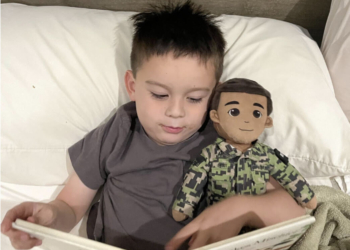When it comes to transition for military families, challenges are well documented for parents who guide their children from school to school — including navigating new state education standards, policies, websites, and stacks of paperwork. The Department of Defense estimates there are 1.6 million military children, with more than two-thirds 11 years old or younger. With this in mind, a program exists that provides support and resources for all school matters of students in pre-K through 12th grade.
School liaisons (SL), formerly known as a school liaison officer or SLO, are available for military students across the globe. They serve as a first point of contact, offering a multitude of services and resources to support students, parents, installation leadership, schools, and the surrounding community. Their main objective is to inform parents about local schools, graduation requirements, after-school programs, homeschooling, and connections in their community.
Specifically, the school liaison:
- Serves as the primary point of contact for school-related matters, including the Youth Sponsorship Program that builds resilience in youth and eases transition;
- Represents, informs, and assists command;
- Assists military families with educational issues;
- Coordinates with local school systems;
- Forges partnerships between the military, community and schools;
Lori Phipps has been working as school liaison for more than 10 years. As the director of operations at the Department of the Air Force School Liaison in San Antonio, Texas, she supports families and schools worldwide, which includes homeschool families. She says the program is growing to support more than transition.
“As education changes, the SL program changes. The program has to remain fluid to continue to stay relevant for commanders, community stakeholders, educators and families. And it can be challenging at times — the fact that there is a continued lack of awareness of the depth and breadth of the program. The program as it was 10 years ago was focused on transition, now the program is charged with building and sustaining education community partnerships,” she said.
Phipps added that she hopes the role of a school liaison will continue to grow as a primary connecter to the community for military families and remain a top priority for commands across the services.
School liaisons also assist with everyday issues, such as helping families understand the many school options and policies for new students. They also offer guidance on the Interstate Compact for the Education of Military Children.
Phipps shares how program support was also used in more recent events impacting students in the U.S. and abroad.
“Even at HQ, we are still helping families resolve concerns and issues. We were engaged in the recent Uvalde tragedy as we had military-connected students registered in the school. Most recently, we are working with families out of the Pacific, who students were unable to register in school as the sponsor married and the student was not on orders. We are working to amend AF policy to ensure that the families have access to the needed requirements for registration,” Phipps said.
School liaison support is at every military installation across all service branches in every country where a military family is serving. As a priority for the DOD and local commands, the program has become the standard bearer of support when navigating the maze of new schools and communities for families. To find a school liaison in your local area, visit Military OneSource.
Read commentsWEIGH IN: Have you worked with a school liaison? Share your experience at https://militaryfamilies.com/submit-your-story/







































